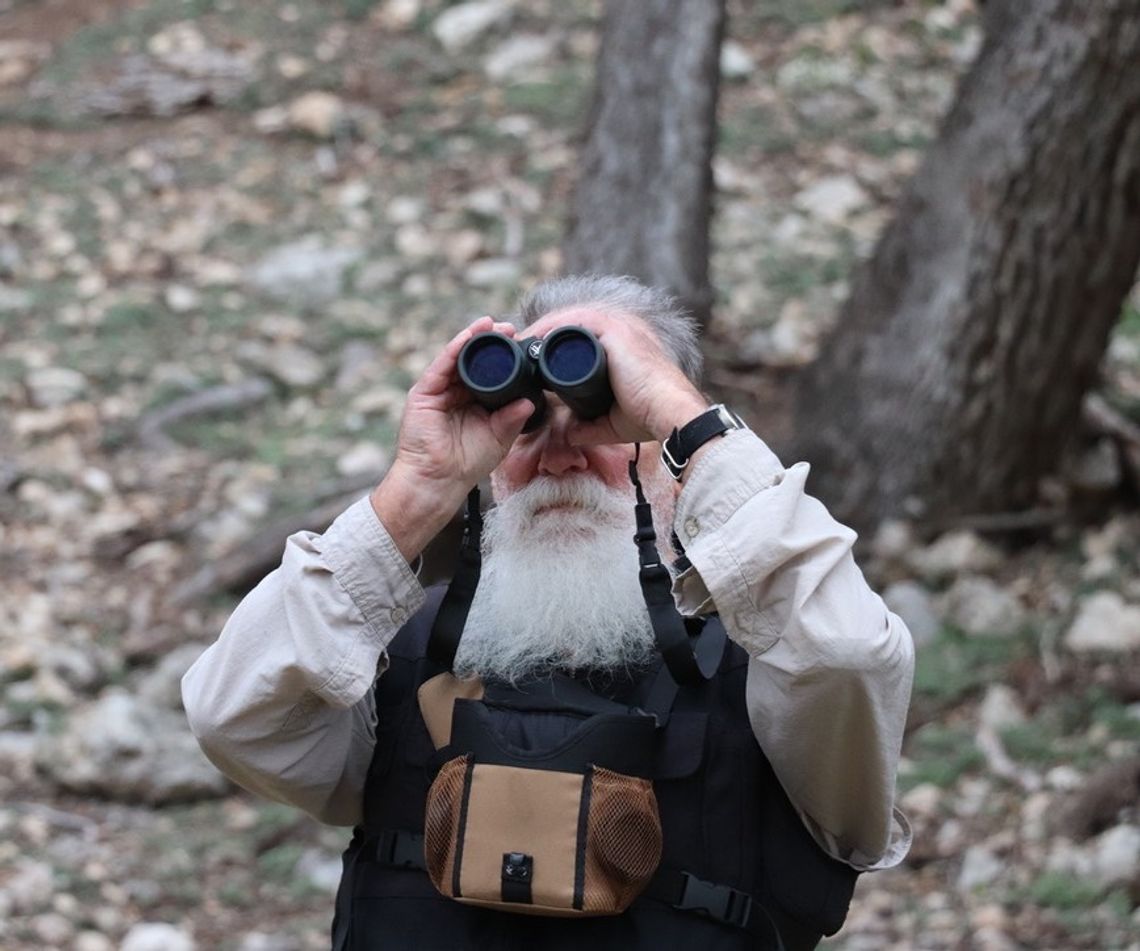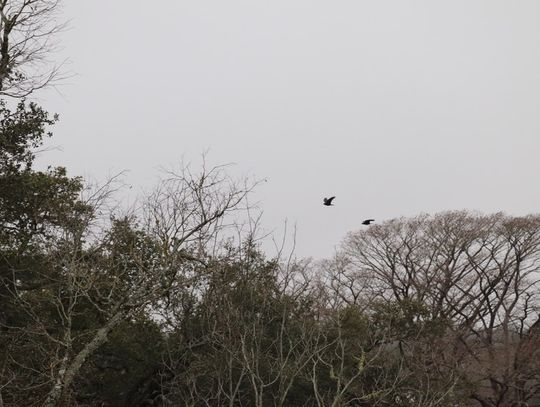The group plods slowly, deliberately, avoiding the scrub brush and low-hanging branches surrounding them. Their eyes — and ears — are finely tuned, looking and listening for any disturbance in the otherwise silent terrain.
A soft “coo, coo, coo” comes from somewhere up ahead, on the right, in a grove of trees. Binoculars are raised to their eyes, as they each search for the source of the sound.
“Mourning dove. Two of them,” says one of the group, the rest nodding in agreement. “Over there, in the top of that live oak,” another points.
For the next three hours, the chirps of cardinals, robins and black-crested titmouses, the tweets of an American Kestral perched on a wire, and the shrill call of a group of ravens circling overhead were heard, spotted and recorded by participants in Monday’s Sisterdale Sanctuary Bird Survey.
The group, led by Patsy Inglet, president of the Bexar Audubon South Central Texas, and Ken Butler, Bexar Audubon Society board member, walked through the Sisterdale Sanctuary, logging the sights and sounds they encountered along the way.
“This is a new bird sanctuary and we’re doing a baseline count to see what’s using the four different habitats this time of the year,” Inglet said. “We’ll continue to get a snapshot once a month of what’s using each habitat.”
The Sisterdale Sanctuary, about 12 miles from Boerne off Highway 1376, is a 32-acre preserve protecting the Guadalupe watershed, providing access to nature and a safe habitat for the many who call it home. The area currently is not open to the public and remains a shelter for all kinds of wildlife.
Four distinct habitats exist within the 32-acre habitat: the live oak savannah, its floodplain, riparian range and bermudagrass field.
“We’ve got four habitats out here. I’ll keep track of what we see or hear in each habitat,” Butler said during morning instructions. “Let me know what you see and hear, and we’ll log it as such.”
The dozen birders began traipsing a path through the savannah, full of its trees, shrubs, fallen branches and rocks among its floor before descending into the distinctively different floodplain — a flat area dozens of feet below with a carpet of grass and very few trees, other than towering live oaks, obviously hundreds of years old, with a line of cedar trees.
Along the side of the floodplain is an escarpment of sheer rock, with crevices, fallen boulders along its bottom and moss growing up its edges.
Inglet described what “the birders” were listening and looking for, and why.
“What you have this time of year is your resident birds, which we call our ‘usual suspects,’ and your winter residents, birds that stop here on their migration, like woodpeckers, and sapsuckers," Inglet said.
“What we’re seeing with the climate changing and getting warmer and drier in many areas, is many birds are shifting their ranges,” she said. “If there’s food for them, if they find what they need, they stay a little bit longer.
“They are very sensitive to the environment, and that’s why we do these surveys,” she added.
The Feb. 10 outing was only the second performed in Sisterdale. Butler walked with a clipboard, noting each sighting and sound recognition within each of the four habitats.
Those Butler logged included the black-crested titmouse, Carolina chickadee, ruby-crowned kinglet, Northern cardinals, canyon wrens, ravens, robins, cedar waxwings, American Kestrel, bluebirds, goldfinches, mourning doves and white-winged doves.
The group will return early in the morning each month, Inglet said. “By having a data set like this, you can see shifts in populations and what’s here.”











Comment
Comments